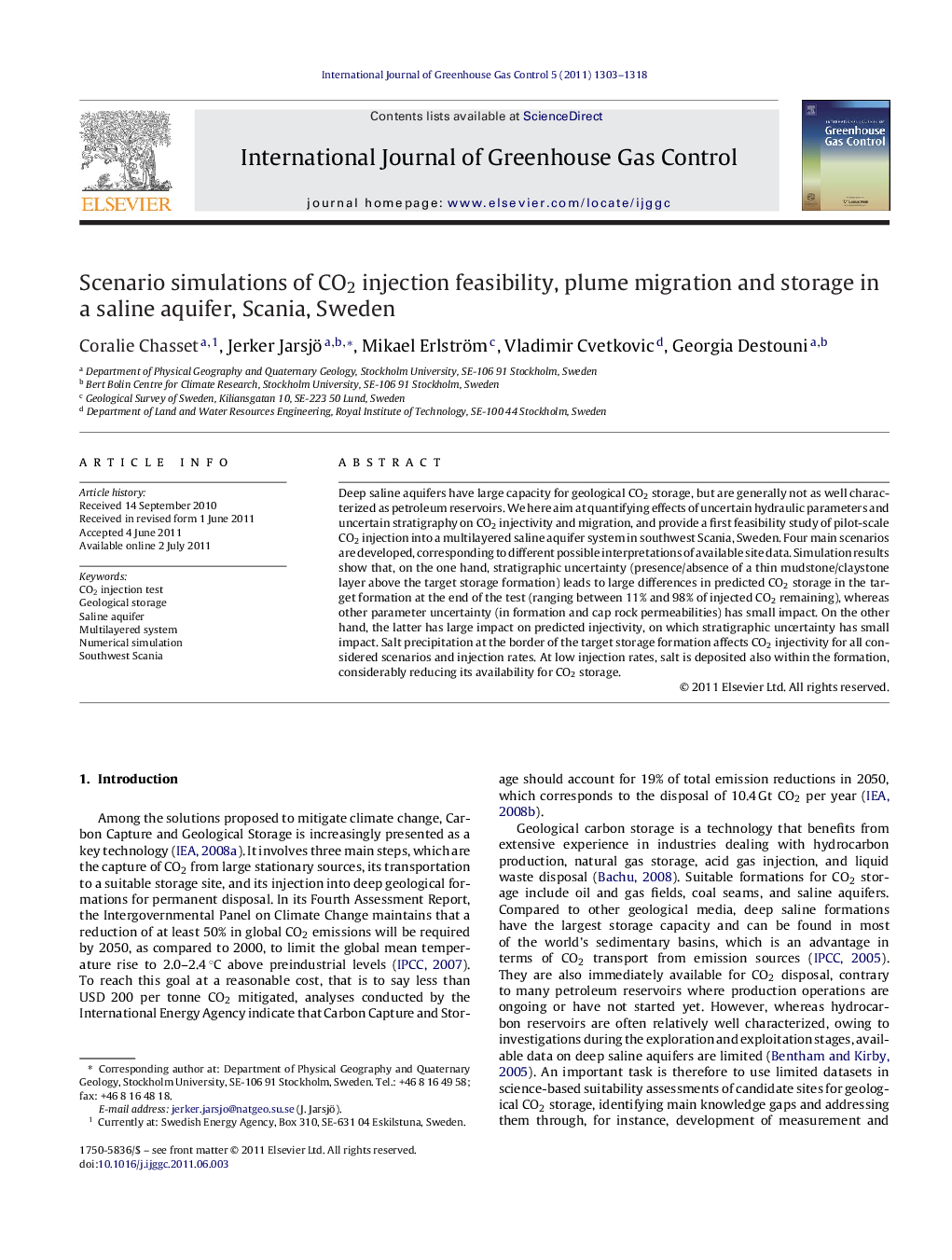| کد مقاله | کد نشریه | سال انتشار | مقاله انگلیسی | نسخه تمام متن |
|---|---|---|---|---|
| 1743657 | 1522019 | 2011 | 16 صفحه PDF | دانلود رایگان |

Deep saline aquifers have large capacity for geological CO2 storage, but are generally not as well characterized as petroleum reservoirs. We here aim at quantifying effects of uncertain hydraulic parameters and uncertain stratigraphy on CO2 injectivity and migration, and provide a first feasibility study of pilot-scale CO2 injection into a multilayered saline aquifer system in southwest Scania, Sweden. Four main scenarios are developed, corresponding to different possible interpretations of available site data. Simulation results show that, on the one hand, stratigraphic uncertainty (presence/absence of a thin mudstone/claystone layer above the target storage formation) leads to large differences in predicted CO2 storage in the target formation at the end of the test (ranging between 11% and 98% of injected CO2 remaining), whereas other parameter uncertainty (in formation and cap rock permeabilities) has small impact. On the other hand, the latter has large impact on predicted injectivity, on which stratigraphic uncertainty has small impact. Salt precipitation at the border of the target storage formation affects CO2 injectivity for all considered scenarios and injection rates. At low injection rates, salt is deposited also within the formation, considerably reducing its availability for CO2 storage.
► Specific consideration of heterogeneous (multilayered) aquifer–aquitard systems.
► All considered scenarios equally consistent with borehole log and core measurements.
► Uncertain stratigraphy primarily influences predicted CO2 storage in target formation.
► Uncertain parameters (permeabilities) primarily influence predicted injectivity.
► Multi-scenario analyses converge on showing large salt deposition effects.
Journal: International Journal of Greenhouse Gas Control - Volume 5, Issue 5, September 2011, Pages 1303–1318